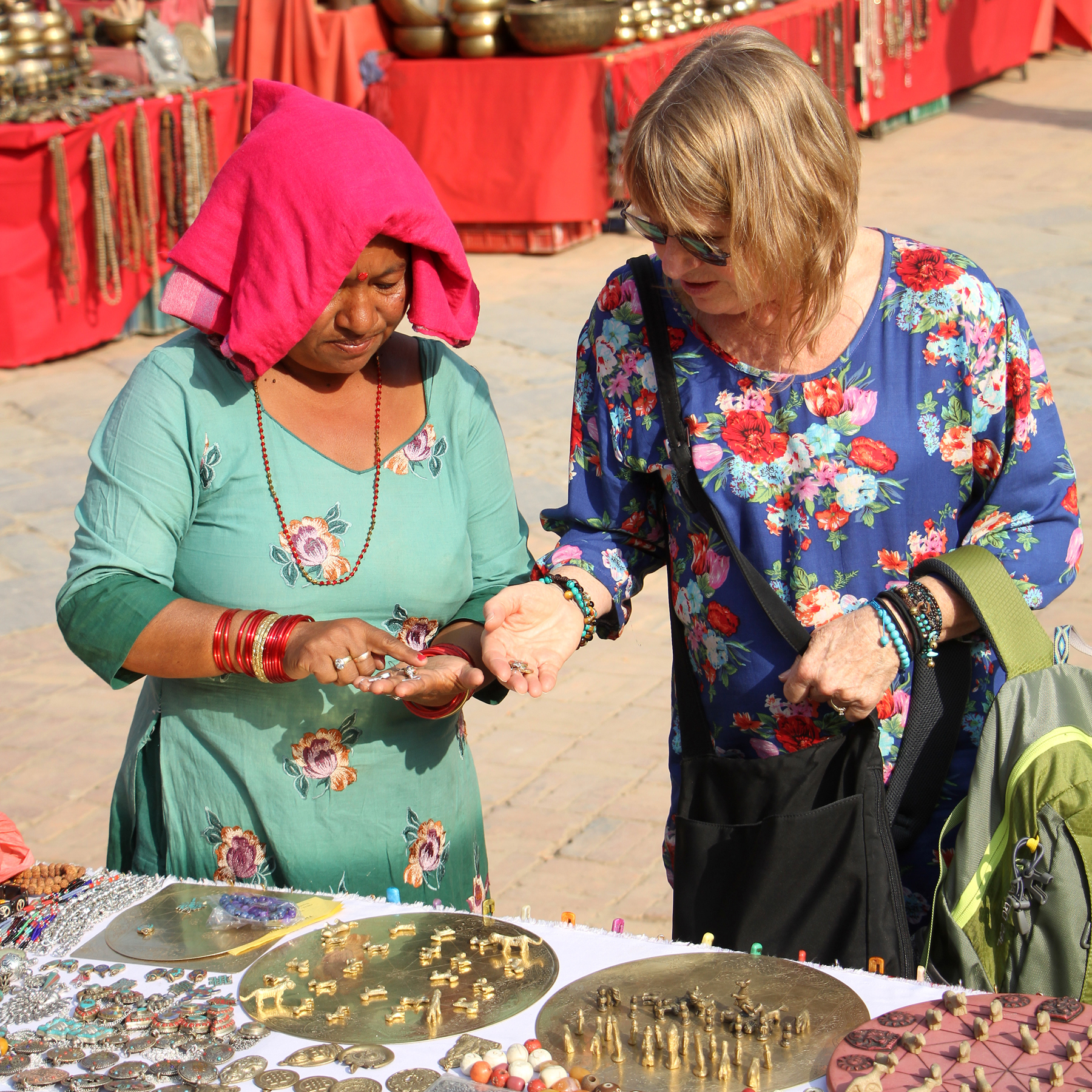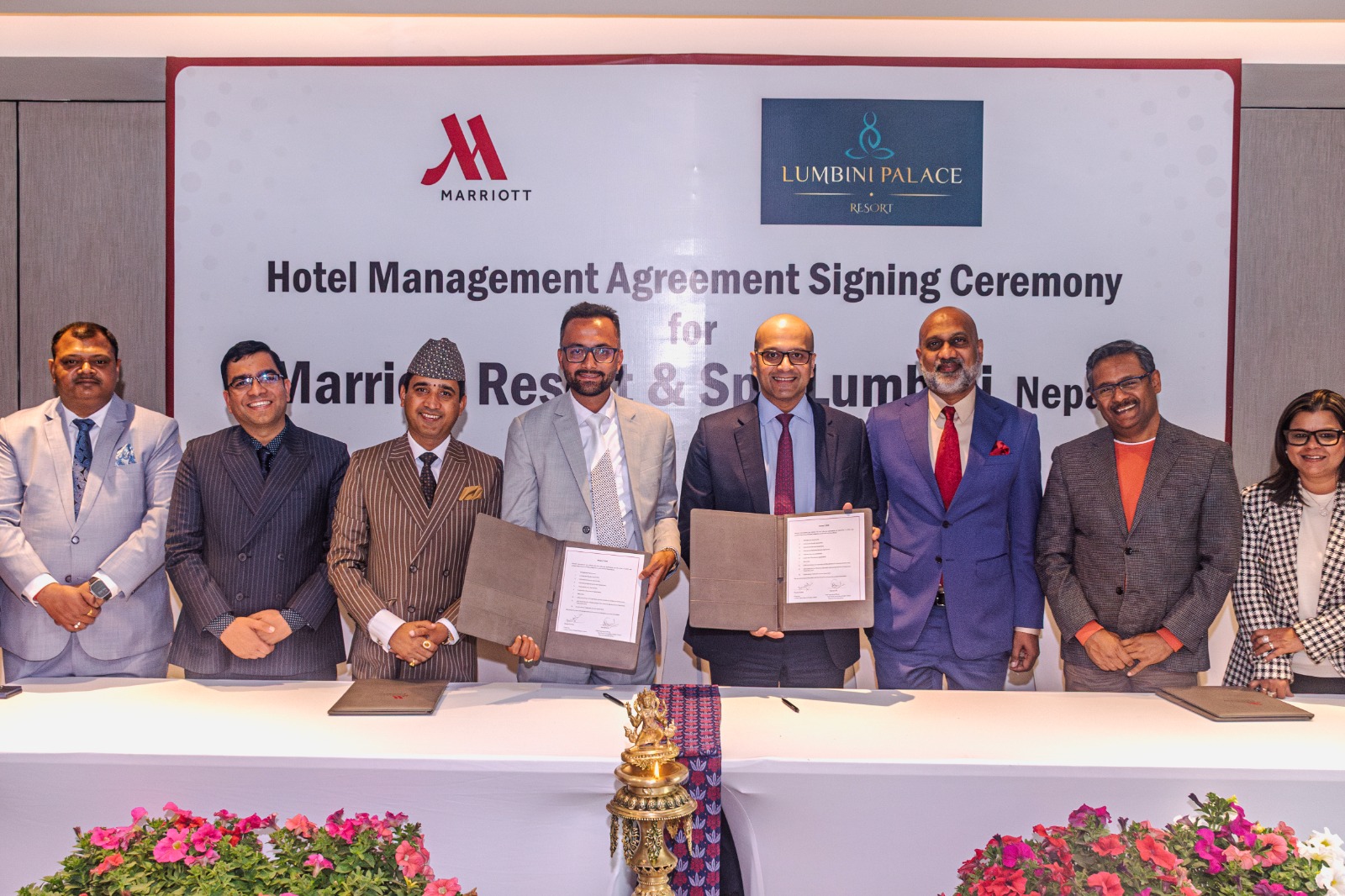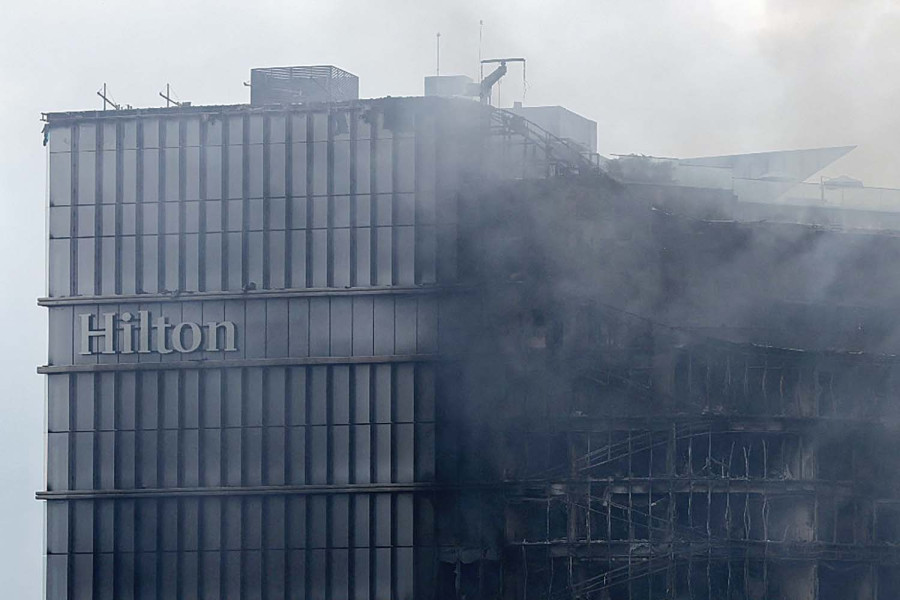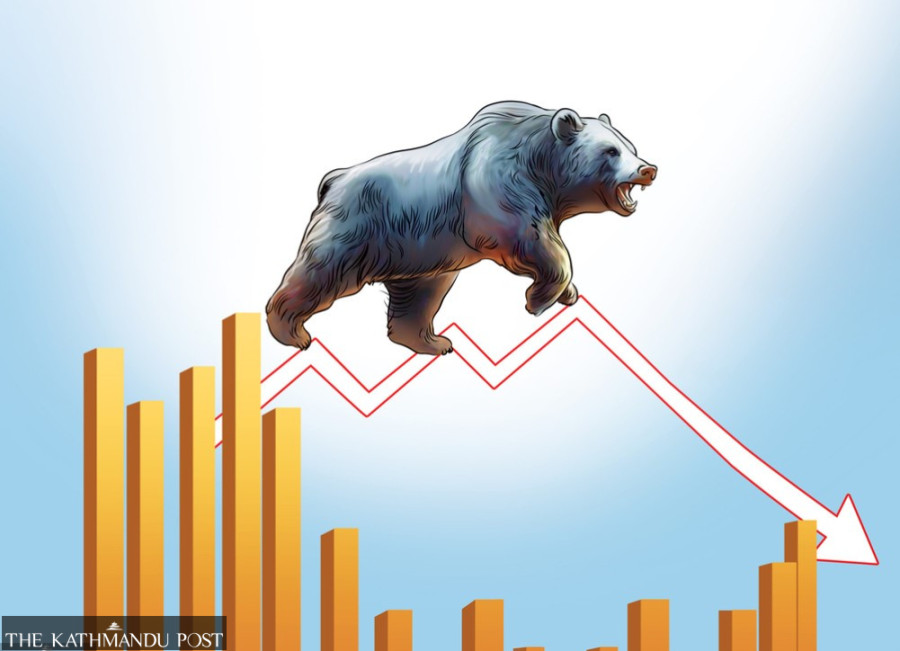Money
Why Nepal’s tourism campaigns have—and haven’t—worked
Given the success of past initiatives, tourism entrepreneurs have high hopes for the campaign that aims to bring in 2 million tourists..jpg)
Sangam Prasain
The government on Wednesday launched Visit Nepal 2020, an ambitious campaign that hopes to draw 2 million foreign tourists over the year. Nepal, a country highly dependant on the import of foreign goods and services, values tourism as a source of foreign currency and the means to sustaining a booming hospitality industry. Beyond the major attractions of mountaineering, trekking and sightseeing, tourism is also benefiting communities, with homestays, mostly in indigenous settlements, becoming much more popular in recent years.
From the hippie paradise to Shangri-La and Naturally Nepal: Once is not enough, Nepal has attempted to change its brand identity to Lifetime Experiences in a bid to position the country as one of the world’s most unique value destinations.
Considering that past tourism campaigns have by and large been successful in giving a boost to the industry in difficult times, even if they didn’t exactly achieve the set goals, this new initiative has also given hope to tourism entrepreneurs. But there are challenges aplenty in making the most out of the national push.
Here’s everything you need to know about Nepal’s major tourism campaigns and the prospects of Visit Nepal 2020.
How was Visit Nepal 2020 announced?
The federal budget presented by Finance Minister Yubaraj Khatiwada in 2018 announced the Visit Nepal 2020 campaign with the goal of attracting 2 million foreign tourists to recoup financial losses incurred during the 2015 earthquakes.
The 2015 earthquakes of April 25 and May 12 affected almost half of Nepal’s districts, including hard-to-reach mountain areas. Nearly 9,000 people lost their lives and more than 22,000 were injured. Nine out of 10 planned foreign arrivals were cancelled in the aftermath of the quakes. The earthquakes also caused massive damage to seven out of 10 World Heritage Sites in the Kathmandu Valley and affected popular trekking destination.
The massive coverage of the Nepal earthquake in the international media was disastrous for the recovery of tourism in Nepal. The global press coverage of the earthquakes was estimated to have a bigger impact, as it discouraged international tourism in the short and medium terms.
The Post-Disaster Needs Assessment report, prepared in June 2015 by the National Planning Commission, had urged the government to announce 2017 and 2018 as Visit Nepal Years to assure visitors that reconstruction and rehabilitation would be completed by then. The objective was to help foreigners feel safe enough to travel to Nepal.
However, the Tourism Ministry postponed the planned campaign until 2020 due to the slow pace of road and airport upgradation and heritage restoration projects. After conducting a proper assessment, the government officially declared the campaign for 2020.

Why are tourism campaigns necessary?
According to Deepak Raj Joshi, former chief executive officer of the Nepal Tourism Board, Nepal has positioned itself as a top country for tourism resilience, as it overcame devastating effects of the 2015 earthquakes within a year.
Foreign tourist arrivals to Nepal plummeted to 539,000 in 2015, a loss of almost a third. In the same year, the industry was also affected by a crippling border blockade imposed by Indian after the promulgation of the constitution. Despite the twin disasters, Nepal’s tourism experienced a dramatic turnaround, recording a jump of 39.71 percent in tourist arrivals to 753,002 in 2016. The country received 940,218 tourists in 2017, up 24.86 percent from 2016.
Arrivals crossed the coveted one-million mark for the first time in 2018 with 1.17 million foreign tourists streaming into the country.
“National tourism campaigns are resilience campaigns that teach skills in adapting well in the face of tragedy and slowed growth,” said Joshi.
Visit Nepal 2020 was launched in line with Nepal’s long-term goal of channeling revenue from tourism towards the country’s social and economic transformation, said Tourism Minister Yogesh Bhattarai at a recent press meet to announce the launch of the campaign. Nepal plans to register $2 billion in tourist receipts by the end of 2020 and generate thousands of new jobs.
According to Joshi, in 2002 and 2003, the country had also launched Destination Nepal campaigns to revive Nepal’s tourism industry from the damage caused by the 2001 royal massacre. But that campaign did not receive much attention. After the royal massacre, tourist arrivals in 2002 had plunged to a 13-year low of 275,468 individuals.
How did Nepal’s first tourism campaign—Visit Nepal 1998—go?
The first national tourism campaign was launched in 1998 with Nepal hosting 463,684 visitors, representing a growth of 10 percent. Visit Nepal 1998 was initiated after Time, the popular American news magazine, published a story on Nepal headlined “Goodbye Shangri La” when Nepal was branded as Shangri-La—a place regarded as an earthly paradise, said Yogendra Sakya, senior tourism entrepreneur and former president of Hotel Association of Nepal.
“At that time, Kathmandu had stinking piles of garbage everywhere,” he said.
The 1998 campaign, led by tourism entrepreneur Karna Sakya, attempted to counter that narrative while also spreading the message that there are other tourism destinations beyond Kathmandu, Pokhara and Chitwan.
In 1999, arrivals increased to 491,504 individuals but soon started to fall. It took another eight years for arrivals to return to that level, with Nepal receiving half a million tourists in 2007.

Did Nepal Tourism Year 2011 revitalise the tourism industry?
In 2011, the government launched another campaign--Nepal Tourism Year--with the goal of bringing in 1 million tourists. Actual arrivals fell short of the target, with 736,215 tourists visiting, despite a growth of 22 percent from the previous year.
Sakya said that nothing was right with Nepal’s tourism industry after the comprehensive peace agreement in 2006, which marked the end of the decade-long insurgency launched by the Maoists.
“Nepal had a challenge to recover from the massive beating it took during the decade-long armed conflict [1996-2006], and to revive its image,” said Sakya, who led Nepal Tourism Year as its national coordinator. “The Nepal Tourism Year campaign was a bid to rejuvenate the tourism sector by sending a message to the international community that Nepal is safe to visit.”
But the end of the Maoist conflict brought about a political transition that dragged on for years. During this time, socio-political agendas were at the forefront, with economic agendas resigned to the back. General strikes, blockades and lockouts organised by various political forces, labour unions, professional groups, the business community and civil societies were common phenomena.
In February 2011, the major political parties pledged that they would not call general strikes anymore. Despite their written commitment, the banda culture appeared difficult to get rid of, but it began to decrease gradually.
What was the impact of Nepal Tourism Year 2011?
In 2011, many countries removed Nepal from their negative travel advisory lists. The government started to invest heavily in infrastructure, particularly airports, realising the growth in the tourism industry. Plans to upgrade Gautam Buddha Airport into an international airport were put forth in 2010, along with two more international airports in Pokhara and Nijgadh started getting priority after 2011.
Estimates show that more than Rs150 million has been spent on the construction of two new international airports and capacity enhancement of Tribhuvan International Airport. Private airlines started to buy planes, with at least two dozen aircraft added to their fleets in the past few years. Fuelled by optimism, the private sector too started to aggressively construct hotels.
“Since 2011, an estimated Rs100 billion has been poured into the hospitality industry from the private sector,” said Sakya. “It’s growing due to the announcement of Visit Nepal 2020.”
After the 2011 campaign, commercial banks too started to invest in the tourism industry.
The major change, however, was regarding travel entrepreneurs’ expansion of the tourism market outside of America and Europe. Now, the industry knows the spending capacity of Indian and Chinese tourists, Sakya said.

How does the tourism industry impact the national economy?
According to the Post-Disaster Needs Assessment report, at least 84,000 workers in the tourism sector, 52 percent of them being women, were affected by the earthquakes. As women tend to occupy less skilled jobs such as housekeeping and waitressing, they are often the first to be laid off, while managerial positions primarily held by men are maintained.
The World Travel and Tourism Council’s annual report into the economic impact of the tourism sector shows that the number of employees engaged in the tourism industry increased to 3.4 million in 2017 from 1.5 million in 2005. This number made up 23.2 percent of the country’s total labour force.
According to research, the travel and tourism sector contributed $8.8 trillion to the global economy and grew faster than the global economy for the eighth successive year—3.9 percent for travel and tourism versus 3.2 percent of global GDP. It is the second-fastest growing sector in the world, ahead of healthcare, information technology, and financial services, and behind only manufacturing, the report said.
Nepal’s tourism sector generated Rs240.7 billion in revenue and supported more than 1.05 million jobs directly and indirectly in 2018, according to the research report. The London-based organisation said that travel and tourism's total contribution to the country’s gross domestic product stood at 7.9 percent last year, up 3.6 percent.
What are the problems that need to be addressed?
Many tourism entrepreneurs are not happy with the planning for this year’s campaign. According to senior tourism entrepreneurs, in the past, the government joined with the private sector and gave them equal ownership. This campaign has not effectively taken the private sector on board, despite being led by Suraj Vaidya, a private sector industrialist.
The government is still not clear on how it will draw in the targeted number of tourists and from which countries, they said. Air connectivity is another issue as it has not improved as it should, if visitors’ numbers are to double this year.
Even though the government had three years to prepare adequately for the campaign, nothing substantial has been visible.
Visit Nepal’s declaration had put pressure on the government to complete two long-running airport upgradation projects: Gautam Buddha Airport in Bhairahawa and Tribhuvan International Airport in Kathmandu. But both projects, after years of delays, remain incomplete.
Travel trade entrepreneurs are also worried that neither the government, the Nepal Tourism Board nor the Visit Nepal 2020 Secretariat has done anything substantial to promote Nepal abroad to attract tourists. A glaring lapse is that the Nepal Tourism Board, the country’s tourism promotional body, is currently without a leader, even as the country inaugurated the ambitious campaign on Wednesday.
.jpg)




 5.44°C Kathmandu
5.44°C Kathmandu





